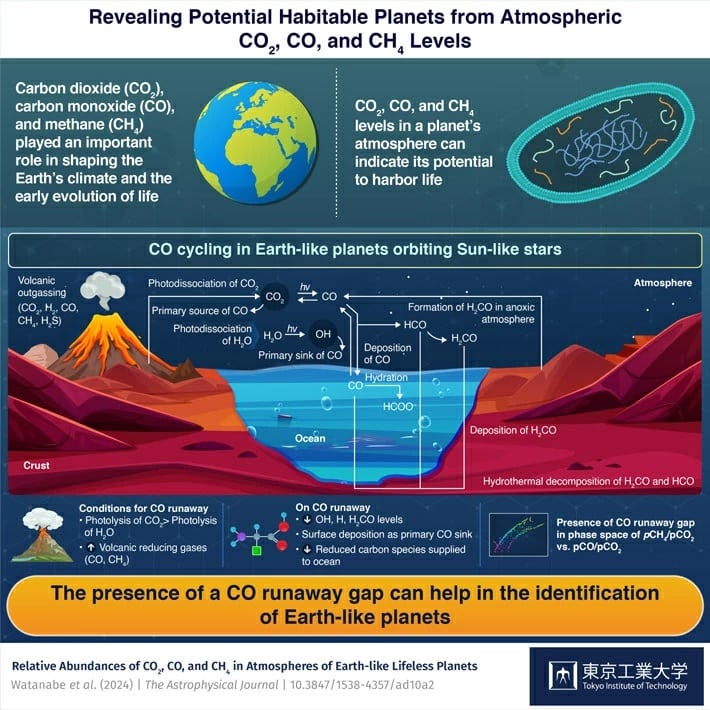Scientists at Tokyo Tech have identified a carbon monoxide (CO)-runaway gap in the atmospheres of Earth-like planets. Their discovery could expand the search for habitable planets.
Scientists used atmospheric modeling to identify this gap. It is a sign of a CO-rich atmosphere on Earth-like planets orbiting Sun-like stars.
CO is an essential compound for forming prebiotic organic compounds, which are building blocks for more complex molecules for forming life.
Associate Professor Kazumi Ozaki from the Tokyo Institute of Technology said, “The possibility of CO runaway is critical in resolving the fundamental problem regarding the origin of life on Earth because various organic compounds suitable for the prebiotic chemistry are more likely to form in a CO-rich atmosphere than in a CO2-rich atmosphere.”
Scientists have studied how carbon monoxide (CO) travels through the air and the oceans. They observed where CO comes from, how it travels, and how it gets removed. They found that CO is mainly generated when sunlight breaks down carbon dioxide (CO2) into CO. Other sources include:
- Chemical reactions in the air.
- Gases from volcanoes.
- A process in the ocean involves a chemical called formaldehyde.

CO is mainly removed from the air after reacting with hydroxyl (OH) radicals. These radicals form when water vapor breaks down in sunlight. Sometimes, volcanic gases can take away these OH radicals, leading to more CO in the air.
The scientists discovered that if CO production is higher than its removal by OH radicals, there can be a runaway effect. This happens when a lot of CO2, or volcanic gases compete with CO for removal. This runaway effect can occur at certain temperatures, especially if there is a lot of CO2 and volcanic gases.
Once the runaway starts, the levels of CO in the air only go down when CO sticks to the ground. Scientists also noticed changes in CO, CO2, and methane (CH4) levels before and after the runaway. This created a gap when comparing their pressures.
Dr. Ozaki said, “Our results suggest that this CO-runaway gap is a general feature of Earth-like lifeless planets orbiting Sun-like stars, providing insights into the characteristics and potential habitability of exoplanets.”
Journal Reference:
- Yasuto Watanabe and Kazumi Ozaki. Relative Abundances of CO2, CO, and CH4 in Atmospheres of Earth-like Lifeless Planets. The Astrophysical Journal. DOI: 10.3847/1538-4357/ad10a2
